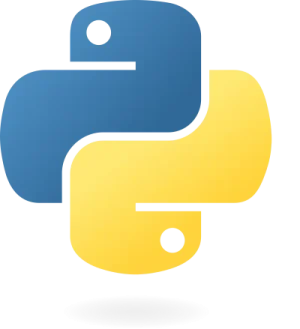Python Sets Exercises
Below are 20 exercises to help you master Python sets. Each exercise will test your understanding of set operations and methods. Make sure to try them all!
- Exercise 1: Create a Set
Write a Python code to create a set containing the numbers 2 through 6 and print it.
myset = {2, 3, 4, 5, 6}
print(myset)
# Output: {2, 3, 4, 5, 6}
- Exercise 2: Access Set Items
Use a for loop to iterate through a set containing the elements “The Hobbit”, “1984”, and “Moby Dick” and print each item.
books = {"The Hobbit", "1984", "Moby Dick"}
for book in books:
print(book)
# Output (order may vary): 1984, Moby Dick, The Hobbit
- Exercise 3: Add an Item to a Set
Create a set with the elements “dog” and “cat”. Add “hamster” to the set and print the updated set.
animals = {"dog", "cat"}
animals.add("hamster")
print(animals)
# Output: {'dog', 'hamster', 'cat'}
- Exercise 4: Remove an Item from a Set
Given a set {“blue”, “yellow”, “green”}, remove “yellow” using the remove() method and print the set.
colors = {"blue", "yellow", "green"}
colors.remove("yellow")
print(colors)
# Output: {'blue', 'green'}
- Exercise 5: Use discard() to Remove an Item
Create a set with elements “pen”, “pencil”, and “marker”. Use discard() to remove “pencil” and print the set.
items = {"pen", "pencil", "marker"}
items.discard("pencil")
print(items)
# Output: {'pen', 'marker'}
- Exercise 6: Union of Two Sets
Create two sets, {2, 4, 6} and {6, 8, 10}. Use the union() method to combine them into a new set and print it.
set1 = {2, 4, 6}
set2 = {6, 8, 10}
result = set1.union(set2)
print(result)
# Output: {2, 4, 6, 8, 10}
- Exercise 7: Intersection of Two Sets
Given sets {5, 10, 15} and {10, 15, 20}, find the intersection and print the result.
set1 = {5, 10, 15}
set2 = {10, 15, 20}
result = set1.intersection(set2)
print(result)
# Output: {10, 15}
- Exercise 8: Difference Between Two Sets
Create sets {7, 14, 21} and {14, 21, 28}. Use the difference() method to find elements in the first set that are not in the second set.
set1 = {7, 14, 21}
set2 = {14, 21, 28}
result = set1.difference(set2)
print(result)
# Output: {7}
- Exercise 9: Symmetric Difference of Two Sets
Use sets {3, 9, 27} and {9, 27, 81}. Find the symmetric difference and print the result.
set1 = {3, 9, 27}
set2 = {9, 27, 81}
result = set1.symmetric_difference(set2)
print(result)
# Output: {81, 3}
- Exercise 10: Check if Set is Subset
Verify if set {4, 8} is a subset of {4, 8, 12} and print the result.
set1 = {4, 8}
set2 = {4, 8, 12}
result = set1.issubset(set2)
print(result)
# Output: True
- Exercise 11: Check if Set is Superset
Determine if {16, 32, 64} is a superset of {32, 64} and print the result.
set1 = {16, 32, 64}
set2 = {32, 64}
result = set1.issuperset(set2)
print(result)
# Output: True
- Exercise 12: Use Update to Merge Sets
Start with sets {11, 22} and {33, 44}. Use update() to merge the second set into the first and print the updated first set.
set1 = {11, 22}
set2 = {33, 44}
set1.update(set2)
print(set1)
# Output: {11, 22, 33, 44}
- Exercise 13: Pop an Item from a Set
Create a set {“War and Peace”, “The Catcher in the Rye”, “To Kill a Mockingbird”}. Use pop() to remove an item and print the removed item and the updated set.
myset = {"War and Peace", "The Catcher in the Rye", "To Kill a Mockingbird"}
removed_item = myset.pop()
print("Removed item:", removed_item)
print("Updated set:", myset)
# Output: Removed item: War and Peace; Updated set: {'The Catcher in the Rye', 'To Kill a Mockingbird'}
- Exercise 14: Clear a Set
Initialize a set {9, 18, 27}. Use clear() to remove all items from the set and print the empty set.
myset = {9, 18, 27}
myset.clear()
print(myset)
# Output: set()
- Exercise 15: Delete a Set
Create a set {6, 12, 18}. Use the del keyword to delete the set and print it to confirm it has been deleted.
myset = {6, 12, 18}
del myset
# Uncomment the following line to see the error:
# print(myset)
# Output: Error: name 'myset' is not defined
- Exercise 16: Union with a Tuple
Combine the set {1, 4} with the tuple (7, 10) using the union() method and print the resulting set.
myset = {1, 4}
mytuple = (7, 10)
result = myset.union(mytuple)
print(result)
# Output: {1, 4, 7, 10}
- Exercise 17: Set Comprehension
Use a set comprehension to create a set of squares of numbers from 1 to 5 and print it.
myset = {x**2 for x in range(1, 6)}
print(myset)
# Output: {1, 4, 9, 16, 25}
- Exercise 18: Copy a Set
Create a set {“apple”, “banana”, “cherry”}. Make a copy of it using the copy() method and print both the original and the copy.
fruits = {"apple", "banana", "cherry"}
copied_set = fruits.copy()
print("Original set:", fruits)
print("Copied set:", copied_set)
# Output: Original set: {'apple', 'banana', 'cherry'}; Copied set: {'apple', 'banana', 'cherry'}
- Exercise 19: Find Maximum and Minimum in a Set
Given a set {8, 12, 5, 20}, find and print the maximum and minimum values.
numbers = {8, 12, 5, 20}
max_num = max(numbers)
min_num = min(numbers)
print("Max:", max_num)
print("Min:", min_num)
# Output: Max: 20; Min: 5
- Exercise 20: Check if Set is Empty
Write a Python code to check if a set is empty. Initialize an empty set and print a message if it is empty.
myset = set()
if not myset:
print("The set is empty")
# Output: The set is empty
